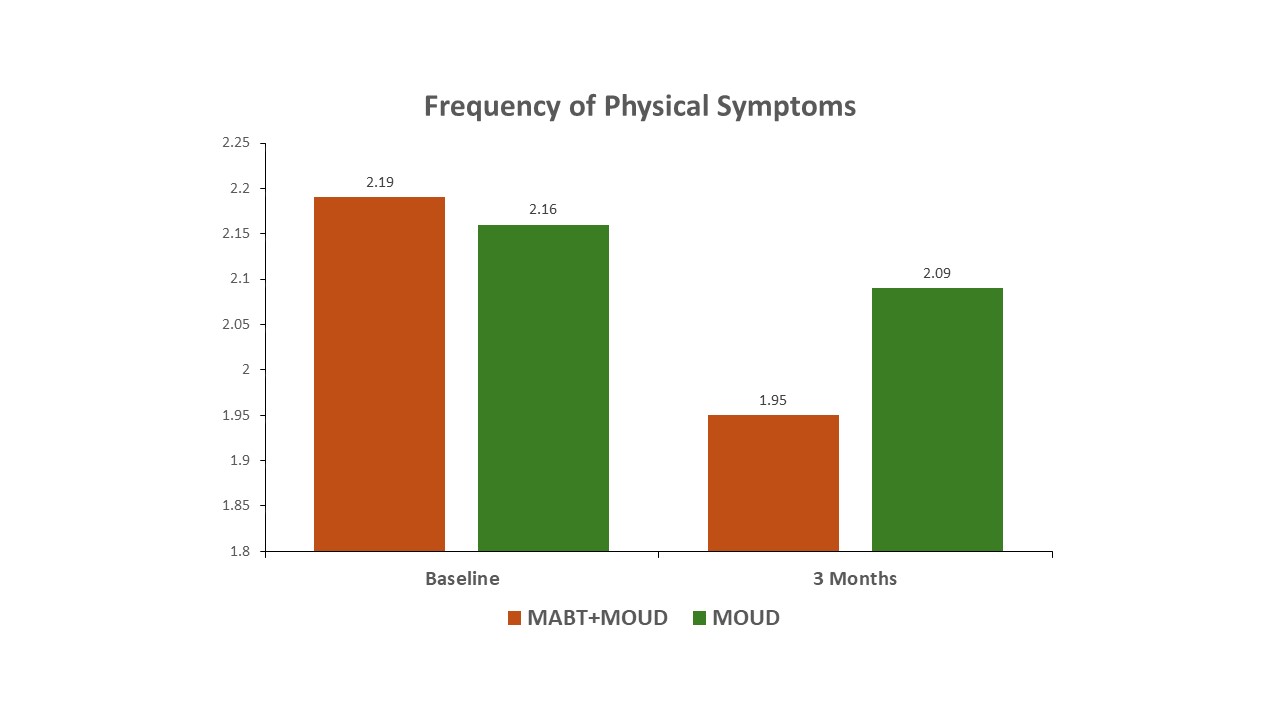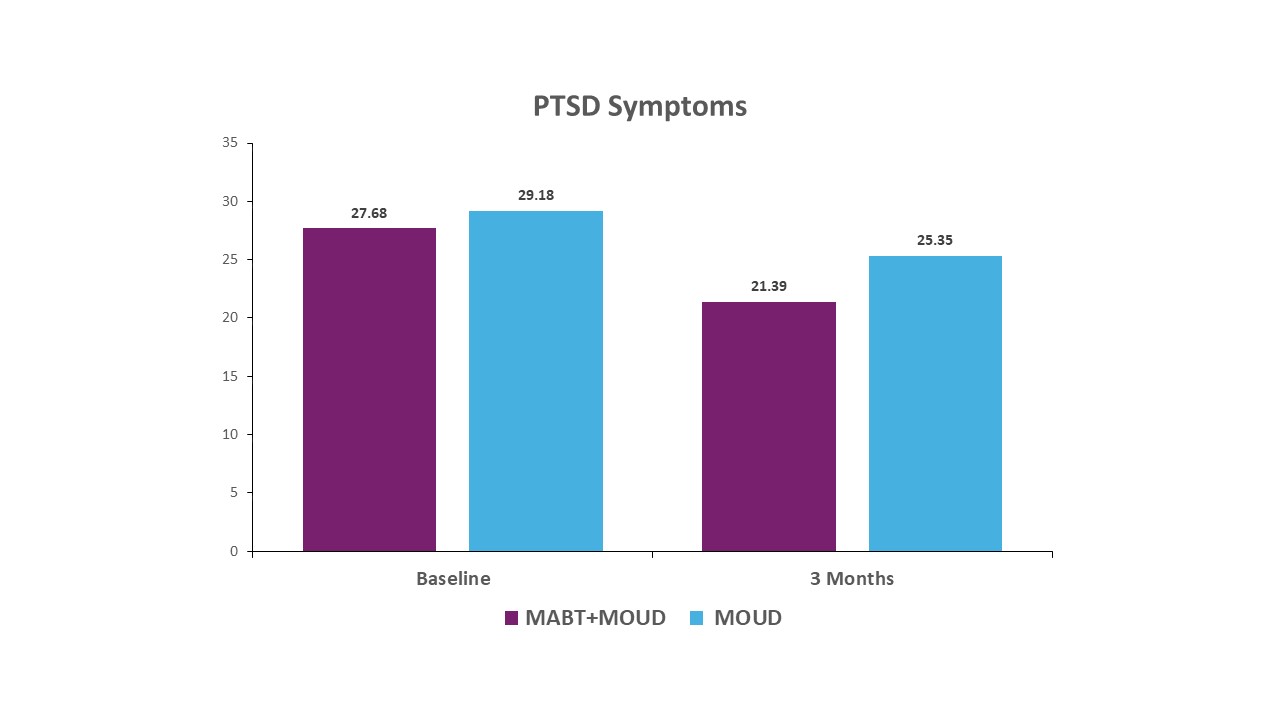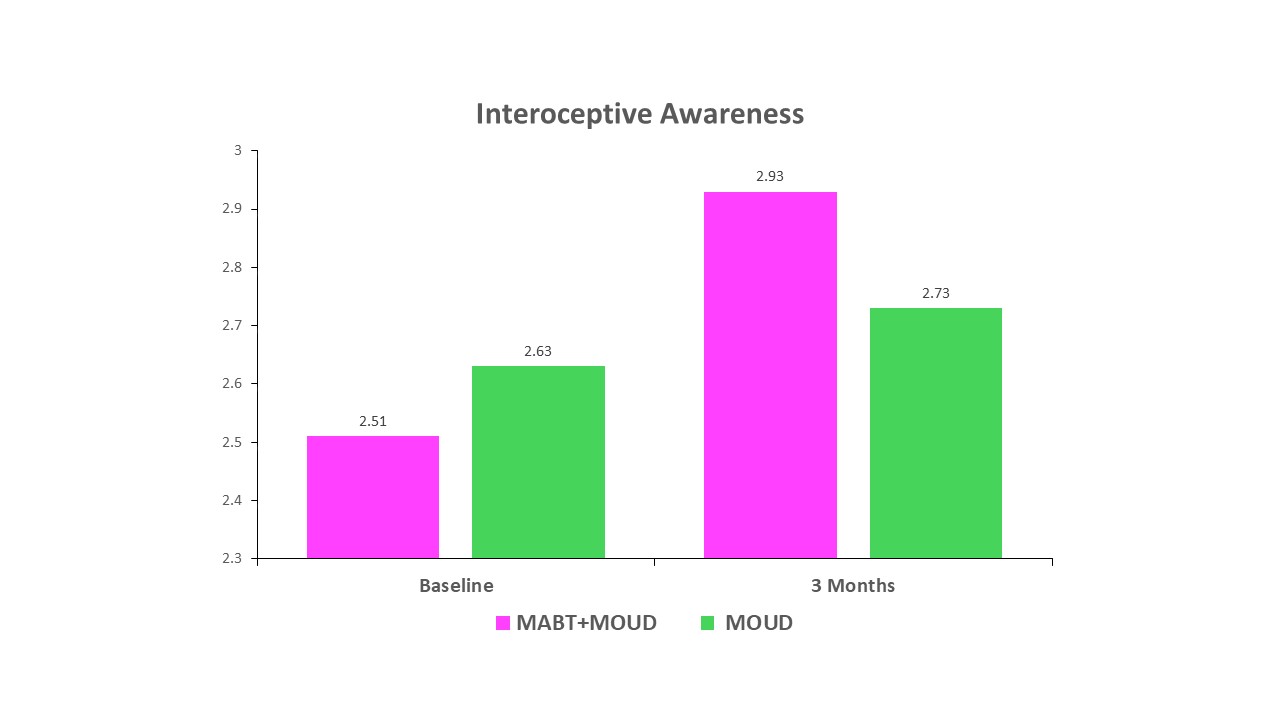Result Highlights
MABT improved: PTSD Symptoms, Pain Outcomes, Physical Symptoms, and Body Awareness
“I learned how to slow myself down including my breathing, thinking, & my body. I learned how to dive internally into my body and listen to it. I learned how to distinguish different sensations in my body & what they were trying to say. I learned different tools to cope with physical pain as well as outside stressors.”
Background
We enrolled 303 people, across 5 clinical sites in western Washington, who were on medication for opioid use disorder. Half of the participants were assigned to receive the MABT program in addition to MOUD treatment, and half were assigned to receive only their continued MOUD treatment. MABT was delivered individually once/week for 8 weeks, and participants in the study completed questionnaires 5 times over the course of 12 months.
Study Results
MABT was well-received. Among those assigned to receive MABT sessions, 71% completed the program, and the response was exceedingly positive (see quote examples below).
Those who enrolled in the study were, overall, highly engaged in MOUD treatment and very few participants reported using non-prescribed opioids or other drugs, with the exception of marijuana which was used at least 3 times/week by 27% of the participants. Given the high engagement in treatment, there was no difference on the amount of substance use reported by those who received MABT+MOUD compared to those who received MOUD only.
That said, those who received MABT showed greater improvements on certain health outcomes, from when they enrolled in our study to immediately after completion of their MABT sessions, compared to those who did not receive MABT. These improvements were:
- Reduced PTSD Symptoms
- Reduced Pain Severity
- Reduced Pain Interference (i.e. pain getting in the way of daily activities)
- Reduced Frequency of Physical Symptoms (ex: muscle aches, numbness, excessive sweating)
- Improved Body/Interoceptive Awareness (ex: noticing body sensations; “listening” to body to understand how feeling; using body awareness strategies to help self-regulate in response to stress)
Bar Graphs of Pre-Post Change: MABT+ MOUD vs. MOUD
-
Frequency of Physical Symptoms

-
PTSD Symptoms

-
Interoceptive Awareness

Participants who received MABT also said that the program:
Increased their awareness and acceptance of emotions/physical sensations. For example, one participant said:
“One thing that I have learned through MABT is to give myself grace, and that its okay to feel stressed or overwhelmed. That, instead of running from it, to just sit with it and accept the hard things that are going on and that I have a lot on my plate. I’ve learned to really accept my emotions more and just be with them verses trying to bottle them all up. I’ve also learned that certain physical pains in my body sometimes can have an emotional connection to them as well.”
Taught them new skills to help regulate their emotions. Here is a quote to illustrate:
“My emotions have become more balanced and less up and down all day. I can close my eyes in the morning when I wake up and think about a certain area and place my awareness in that and it helps me relax in the morning and whenever I need it.”
Empowered them to engage in self-care. One participant said:
“I am making decisions for myself, like getting my hair cut. I am putting on make up and taking time for myself. Taking a walk or a drive to have time to myself. Listen to praise and worship music.”
Supported their recovery. A quote to illustrate:
“It just helped me concentrate on my body more than the drugs and it made me feel connected to my body and keep it sober and it made me want to nurture my body and care about it more and give it the things it needs.”
Long Term Findings
Some improved health outcomes were maintained long term (over 12 months) for those in the MABT+MOUD group, compared to those in MOUD-only group. These were:
- Reduced PTSD Symptoms
- Reduced Frequency of Physical Symptoms
- Increased Body Awareness
These findings point to the importance of body awareness skills to support (reduce) symptoms of trauma and physical discomfort among those in MOUD.
If you would like to read more about what we learned from our study, here is an article about our participants and chronic pain; and here is an article about our participants and trauma.